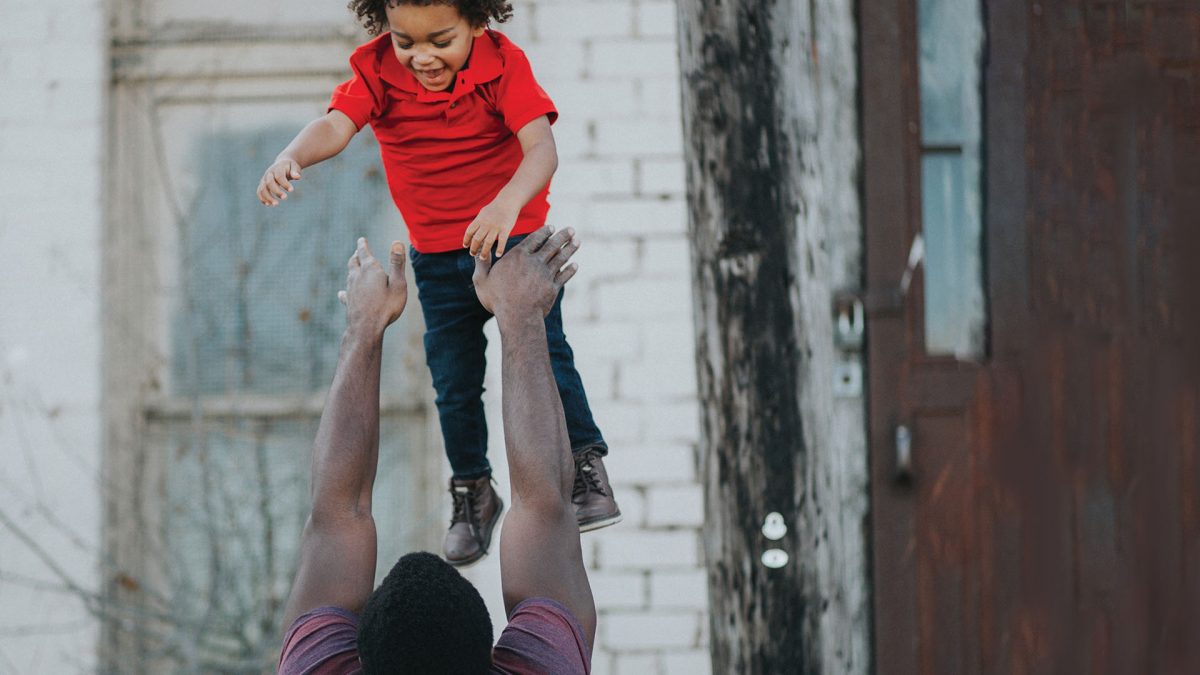We all play a role.

No one is immune to life’s challenges. The COVID-19 pandemic has made that clear to any doubters and raised the issue of “resilience” into the top tiers of popular news topics.
Resilience is the capacity to maintain competent functioning in the face of major life stressors. Since social problems are not going away, how do we create a culture in which children can do well in spite of adverse life experiences? Resilience is not a personality trait that someone is born with, but rather a capacity that develops over time.
Think of resilience as a balance with negative life experiences on one end and endurance (or survival) factors on the other. The more factors a child has, the more resilient they will be, the better to cope with difficulties that will inevitably come their way.
Resilience happens at the individual, interpersonal, and community levels.
ACKNOWLEDGING LIMITS
Before we explore how to build resiliency, we need to acknowledge its limits. Adverse childhood experiences have a cumulative effect. The more childhood traumas a person experiences, the worse their emotional and physical outcomes. That is why early intervention is key to limiting the negative impact. That doesn’t mean that what is discussed in this article can’t help a child who has been through severe adversity, but improvement may be limited.
At the individual level, children who are more resilient have certain personality characteristics. Children who have a perceived level of self-control are able to adapt to changes in life, are able to connect with others, have a sense of faith and hope, are outgoing, and have good stress-management skills to cope with life’s stressors effectively. Some children are more likely to be born with these strengths, but these strengths may also be built in the context of relationships.
BUILDING SELF-ESTEEM
Resilience begins with building self-esteem, but that doesn’t happen in a vacuum. It comes from feedback from others on what we do and who we are as a person. This occurs in relationships. Ideally, this starts in the home. Every child has their strengths. Be specific and honest in your encouragement so that a child will more likely believe and then internalize those positive statements. This helps to build a positive connection between parent and child. According to the U.S. National Longitudinal Study of Adolescent to Adult Health,¹ regardless of race, ethnicity, or socioeconomic status, children who reported feeling connected to a parent are protected against many different kinds of risks, including emotional distress; suicidal thoughts and attempts; cigarette, alcohol, and marijuana use; violent behavior; and early sexual activity.
FAMILY MEALS
Another great way to build resiliency in the home is to have regular family dinners. In most cultures, sharing food is an important part of bonding. Research has found that the more family meals that occur in the home (up to five times a week), the more the child benefits. According to research, eating family meals together results in higher academic test scores, lower rates of obesity, fewer suicidal thoughts/attempts, less substance use, less early sexual activity, fewer school suspensions, less bullying, and an increased likelihood of wearing a seat belt and a bicycle helmet.²
Family meals can happen at any time of the day and should be pleasant and positive. They work by helping a parent be aware of what is going on in their child’s life, strengthening positive emotions through interaction, improving family communication, and providing an opportunity for positive role modeling.
CARING ADULTS
Unfortunately, not all children have a supportive parent or stability at home. Even youth with positive parental relationships benefit from another caring adult in their life. Researchers have consistently found that one factor that leads to resilience is a caring adult in a child’s life whom they can identify with and receive support from.
The most critical element to academic success within a school is a student developing a mentor relationship with a responsible, caring adult. According to a study by the California Mentor Foundation Research,³ 98 percent of youth who were mentored stayed in school, 85 percent did not use drugs, 98 percent did not become a teen parent, and 98 percent did not join a gang.⁴
The church community provides a wonderful opportunity to build mentoring relationships in Sabbath School, Pathfinders, Adventist Youth, and other youth activities. Sometimes these relationships are built through such extracurricular activities as educational trips, sports, music, and community programs such as “Big Brothers
Big Sisters of America.”⁵ Of course, in any mentor relationship, there must be safe boundaries to prevent inappropriate behavior by mentors. Some adults intentionally prey on vulnerable youth and/or inappropriate relationships develop over time with increased intimacy.
LIVING IN COMMUNITY
Although one-on-one relationships are important, we also live in communities. Church is beneficial in building mentoring relationships and also in providing our youth a community and a foundation of faith. Though much faith-building can happen individually, it can also grow in the context of a Christian community. What youth are struggling with today is a sense of loss of connection to a community. Their increased reliance on social media can create higher levels of isolation and loneliness. Churches need to intentionally connect with their youth and encourage them to connect with one another.
Children spend more time in school than in any other community. Schools must promote positive, cooperative behavior and a culture of education. This begins by helping students interact with one another. It can happen in small-group discussions designed to encourage students to get to know one another better. Teachers can help by calling their students by name, establishing clear boundaries in the classroom and then enforcing and modeling those boundaries. When students experience their school as a community, it helps to improve their learning, behavior, and even health outcomes.
Research in international contexts confirm the information shared here.⁶ Variations exist between cultures and the rituals used to aid in recovery. These traditions should be honored if at all possible by those who provide aid to youth at risk from a different culture.
Resilience is essential in this sinful world. Resilience is nurtured by proactive connections with parents, mentors, churches, and schools.
Within our sphere of influence we all play a role in developing positive relationships.
¹ https://www.icpsr.umich.edu/web/DSDR/studies/21600
² See, for example, https://www.apa.org/pi/families/resources/develop.pdf.
³ https://www.camentoringpartnership.org/research
⁴ https://www.atlantacaresmentors.org/become-a-mentor
⁵ https://www.bbbs.org
⁶ A. S. Masten, “Global perspectives on resilience in children and youth,” Child Development 85, no. 1 (2013): 6-20.








